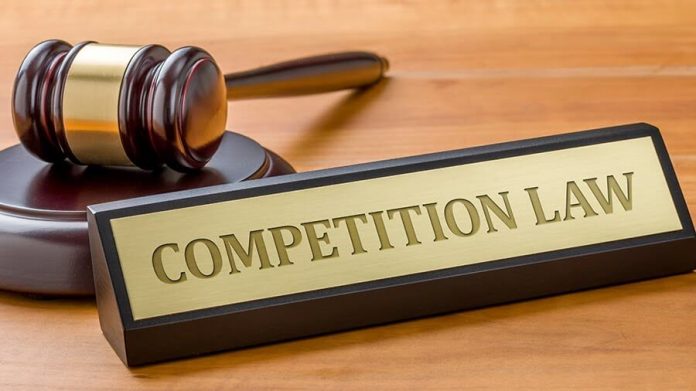This article is written by Poonam Gulati pursuing LLM in Corporate laws and/or Intellectual Property laws and Media and Entertainment laws Course at lawSikho. This article has been edited by Ruchika Mohapatra (Associate, Lawsikho).
This article has been published by Sneha Mahawar.
Table of Contents
Introduction
The general notion qua the relationship of Competition Law with Intellectual Property Rights at the first glance seems tangled considering the fact that IP law creates and protects the monopoly rights while the Competition Act seeks to exclude monopoly in the market. It is pertinent to note that Section 3(5) in the Competition Act, 2002 provides exclusion to IP Laws to facilitate their enforcement and it must be understood that IP rights are not per se violative of provisions of competition. The administration of Competition Law in India is in its infancy and quite a few cases reflecting the interface between the two laws have come before the CCI & Courts. But lack of enough case laws & jurisprudence qua the same brings no choice but to study jurisprudence in the US and EU and bring it to use in the Indian judicial system. A comparative study of Competition Law and IP Rights, discussed in this article, requires a basic understanding of the intention and objectives behind the design of the two regimes. It includes the study of the effects of one law over the other, their independent ambit, and the interface of the two and other relevant complementary & supplementary laws in the present-day economy.
Indian Competition Law
The Indian Parliament enacted comprehensive competition legislation to prevent appreciable adverse effects on competition {AAEC} which simultaneously regulates business practices in India, called the Competition Act 2002{Competition Act}. This legislation succeeded the Monopolies and Restrictive Trade Practices Act 1969 {MRTP Act}, a prior regulatory regime that was required to be done away with post-economic liberalization in1991. This Act had no provisions whatsoever concerning mergers & acquisitions. The Competition Act has been amended in 2007, to include provisions that fulfill its objectives and suit the changed business conditions in India. The Act created enforcement authorities, the Competition Commission of India (CCI) & Competition Appellate Tribunal & {COMPAT}. An SLP before the Supreme Court of India is the last resort.
Competition Law is the codification of rules designed to promote and sustain market competition. These laws are prevalent across the globe with active enforcement & advocacy functions. The aim that the competition policy strives to achieve is to ensure fair competition by way of regulatory provisions upon the market. It does not in any way intend to create restrictions that detriment their growth. In fact, it aims at promoting healthy competition for the growth of society by prohibiting unethical practices that make the smaller or new businesses difficult to enter and/or survive in the market. Examples of a few anti-competitive practices are price-fixing, predatory pricing, bid-rigging, dumping, etc.
The Competition Act primarily is premeditated to control three categories of competition in the market:
- anti-competitive agreements;
- abuse of a dominant position;
- combinations (mergers, acquisitions, and amalgamations).
Anti-competitive agreements
Powerful enterprises come together and make horizontal or vertical agreements with each other to influence the market conditions to their benefit. The organizations exert joint power by making such agreements of colluding instead of competing by forming a single firm and creating a position of dominance in the market. Section 3 in the Competition Act, 2002 prohibits agreements, which cause or is likely to cause an “appreciable adverse effect on competition” within India. However, the advantage may be taken on account that ‘appreciable’ quantum is not prescribed and ‘adverse effect on competition’ is not defined in the act thus open to interpretation.
Abuse of dominant position
The term abuse of dominant position refers to anti-competitive business practices carried out by a dominant organization to maintain or increase its dominant position in the existing market. Section 4 in the Competition Act, 2002 expressly provides that ‘no enterprise shall abuse its dominant position’, but the term ‘dominant position’ is not clearly defined under the Act however such position that enables it to-
- operate independently of competitive forces prevailing in the relevant market; or
- affect its competitors or consumers or the relevant market in its favor.
Practicing such as price-fixing, vertical integration, market sharing, etc are considered illegal under the Act.
Combinations
The acquisition of one or more enterprises by one or more persons or merger or amalgamation of enterprises shall be a combination of such enterprises and persons or enterprises is defined in Section 5 in the Competition Act, 2002 The purpose of the combination decides the form of the combination, which may be a merger, amalgamation, acquisition of shares, voting rights or control over an organization. The Competition Act explicitly allows the commission to examine a combination effect inside and outside India and pass orders against it provided that such combination has an adverse effect on competition in the relevant market in India.
Intellectual Property Rights
According to the World Intellectual Property Organization (WIPO):
“Intellectual property (IP) refers to creations of the mind: inventions; literary and artistic works; and symbols, names, and images used in commerce. IP is protected in law by, for example, patents, copyright, and trademarks, which enable people to earn recognition or financial benefit from what they invent or create. By striking the right balance between the interests of innovators and the wider public interest, the IP system aims to foster an environment in which creativity and innovation can flourish”.
“IP is the creative work of the human intellect. Like any other property right, it gives the owner the sole right to benefit from their creation, for a specified period. Article 27 of the Universal Declaration of Human Rights provides for the right to benefit from the protection of moral and material interests resulting from authorship of scientific, literary or artistic productions” {VK Ahuja, Law relating to Intellectual Property Rights (2nd edition, LexisNexis 2013) 3}. It becomes necessary to protect the intellectual property of a country as it is associated with the progress of the nation in several fields such as art, science, technology, etc. Intellectual property includes trademarks, copyrights, patents, designs, geographical indications, etc.
IPR and Competition Law
From a bird’s eye view, it may seem that COMPETITION LAW & IPR operate against each other because all forms of intellectual property have the potential to violate the competition law. It is pertinent to note that IPR Laws do not make any reference to Competition laws and their effects on IPR, however, that does not imply that IPR laws can be applied in isolation from Competition laws. Indian Competition Act treats IP like any other tangible property. The relationship between the objectives of both laws must be understood to comprehend the effect of the former upon the latter and vice-versa.
Competition Law focuses to minimise monopoly power and maximizing healthy competition and growth in the economy while IP laws protect the IP holder and an exclusive right for a specific period for commercial gains. This is an exclusive right but not absolute, it is a preventive right held by the IP holder but cannot be used as a grant of monopoly status. This is where the Competition Law comes into the picture and expressly provides that anti-competitive practices at the instance of the IPR holder, it is subjected to competition law. The concept of anti-competitive practice is clear from Sec 3 of the Competition Law. Further reasonable use of IPR is exempted from the purview of Competition law expressly in Section 3(5) in the Competition Act, 2002 thus protecting IPR.
Section 4(2) in the Competition Act, 2002 provides that abuse of IP rights
IP holders are actionable under the ICA. Section 3.
of this Act prohibits anti-competitive practices, but this prohibition does not restrict “the right of any person to restrain any infringement of, or to impose reasonable conditions, as may be necessary for protecting any of his rights” which have been conferred under IPR laws like Copyright Act, 1957, Patents Act, 1970, the Geographical Indications of Goods (Registration and Protection) Act, 1999 (48 of 1999), the Designs Act, 2000 and the Semiconductor Integrated Circuits Layout-Design Act, 2000. This implies that no unreasonable restrictions towards production, distribution, exclusivity conditions, restricting quantities and prices, patent pooling, and tie-in arrangements, can be included while licensing IP as it would be violative of Competition Policy.
Conflicting grounds between IPR and Competition Law
Abuse of dominant position
Section 4 of the Competition Act, 2002 expressly states that ‘no enterprise shall abuse its dominant position’. This ground brings in litigation related to IPR and Competition Law. In the case of Aamir Khan Productions Private … vs Union Of India on 18 August 2010 the court ruled that the competition commission (CCI) has the power to deal with intellectual property cases. CCI further said that IP laws do not have an absolute overriding effect on Competition Law.
Refusal to license
IPR involves the right to grant a license to the right holder to exploit the same in return for benefits that fall within the licensed period. Due to this right, its holder can prevent others from exploiting the same but cannot prohibit development in its garb. Here it overlaps the purview of Competition Law. In the case of Super Cassette Industries Ltd. vs Entertainment Network (India) … on May 16, 2008, it was held that ‘the owner of the copyright exercises freedom of monopoly, but with unreasonable terms, it would amount to refusal”. This refusal to license was viewed as anti-competitive.
Tying agreements
Section 3(4) of Competition Law prohibits tying agreements that involve the selling of a combo of a highly usable product or service with a lesser important product or service, wherein the seller refuses to sell them separately. The landmark Case of the European Union (EU) against Microsoft for alleged antitrust abuse. European Union Microsoft antitrust case | Microsoft Wiki | Fandom Microsoft case of anti-competitiveness originated in December 1998, when the complainant Sun Microsystems alleged that Microsoft, due to a beneficial horizontal agreement, was refusing to supply their company with interoperability information that was essential for interoperating with Microsoft’s dominant PC operating system. Later the Commission examined the tying of Microsoft’s Windows Media Player to its Windows 2000 version.
Excessive pricing & predatory pricing
The concept of excessive pricing & predatory pricing falls within restrictive trade practices. Overpricing of patented goods does not violate provisions of Competition Law in all cases as the CCI observed that different pricing according to the kind of licenses is a common practice and is acceptable. However, it is important to strike a reasonable balance between IP protection and competition-related policies in the market to promote innovation & wealth maximization keeping in mind the welfare of the society.
IP law grants negative preventive rights in favor of the holder and restrictions upon others in the light of infringement. Sec 3(5)(i) facilitates the rights conferred by the IP laws. The rights that get protection are those which are mentioned in the IP laws themselves, nothing beyond that. This concept may be better understood In the case of Shamsher Kataria v. Honda Siel Cars India Ltd. CCI Case No. … (Automobile spare parts case), the CCI dealt with the IPR exemption under s 3(5). In this case, the original equipment manufacturers (OEMs) entered into agreements with original equipment suppliers (OESs) for the procurement of some components. The designs, technical specifications, tools, etc. were given by the OEMs and the agreement prohibited OESs to trade in the outside market with third parties or aftermarkets without the consent of the OEMs. The OEM contended that this agreement fell within the ambit of ‘reasonable condition’ under S 3(5)’.
The CCI states that it is not that a ‘reasonable condition’ imposed would not be in contravention to Sec 3 of Competition Law but that any ‘unreasonable condition’ would be in its contravention. The CCI has a clear list of practices that would be in contravention to Section 3 of the Act.
Practices in contravention include
Patent Pooling
This practice becomes restrictive when persons or businesses decide not to grant licenses to outside parties.
Tie-in Arrangement
This practice is restrictive on behalf of the patentee who alone supplies goods to the third party.
Price-fixing
A practice wherein the licensor fixes the price at which the licensee shall sell the goods, amounts to restrictive practices.
Royalty
Any agreement to pay royalty beyond the expiry period of the patent is in contravention of fair practices.
Recommendations to avoid or overcome conflicts
Keeping in mind that IPR cannot be isolated from provisions of competition Law and IPR have to comply with them it is recommended that
- The CCI and IPR authorities must coordinate to resolve the potential issues from time to time because aggressive IP laws shall increase transaction costs and simultaneously decrease social welfare.
- Compulsory licensing is a solution to issues of ‘refusal to deal’
- The regimes & implications must be assessed before defining the market policies within the country.
- To determine the grounds of granting compulsory licenses of IPRs, the guiding principles of the TRIPS agreement must be taken into account for counter-balance.
- A tougher approach is needed towards monopolization & abuse of dominant position to deal with cases like the Microsoft case. (microsoft.fandom.com/wiki/European_Union_Microsoft_antitrust_case)
- IP Licensing practices must have clear & strict guidelines as followed in the US and EU.
- With over 100 countries practicing Competition Law & about 159 developing their IP laws, authorities of both sects have a significant role to play.
- The legal framework, guidelines, and jurisprudence developed by the US &EU along with the base provided by the TRIPS agreement with respect to technology licensing and transfer may be the guiding path in the formulation of dynamic and effective IP & Competition policy in our country.
Conclusion
From the above discussion, it is concluded that IPR & Competition Law are complementary to each other as they share certain important objectives thus Competition policy of the market has to consider the IP rights of innovations that bring consumer welfare and boost the market. They jointly supplement and contribute towards economic rationale and innovative market conditions, favorable to public policy and resulting in the economic development of countries all over the world. Competition policy is an effective counterbalance to protecting intellectual property rights and controlling its abuse.
The TRIPs Agreement provides a basic framework of intellectual property protection as well as enforcement of anti-competitive licensing practices in intellectual property, there is no doubt that IP is gaining huge importance in the era of globalization. However, certain questions such as the standard of practices under which actionable abuses may be determined are left unanswered by the TRIPS. Competition Law in India was enacted in 2002 and amended in 2007 to give it full force and to adapt to the changes in the Indian business/economic scenario. Nevertheless, it still needs to get more teeth so that it may efficiently deal with IP abuses because the competition policy in India is not fully evolved to develop the necessary jurisprudence on the subjects of conflict between the two laws. India requires more guidance in terms of the legislative framework with the background of available jurisprudence in the US and the EU which can be supportive in IP and competition policy formulation. The interface of intellectual property rights and competition law has grown massively, owing to the expansion and strengthening of intellectual property on a large scale. While IP law attributes exclusive control rights to a person over his assets, competition law seeks to promote innovation by checking market barriers for the benefit of consumers and encouraging competition among a multiplicity of suppliers of goods, services, and technologies. Two main concerns that dominate this IPR/competition law interface is the potential abuse of monopoly pricing, especially in developing countries where active substitutes to IPR-protected products may not be readily available. Second, competition law seeks to draw the line between permissible business strategies and abuse of IPRs -a line which is often blurred by horizontal agreements, exclusionary licensing restrictions, tie-in agreements, excessive exploitation of IPRs, and other selling practices. However, at a conceptual level, the lines are clear. The monopoly rights granted by IPR are not anti-competitive but become so when exercised beyond their intended scope of exercise.
References
- https://www.wipo.int/about-ip/en/
- https://blog.ipleaders.in/interplay-competition-law-ipr
- https://lawjournals.celnet.in/index.php/jiprl/article/view/268
- https://www.researchgate.net/publication/307824931_Interface_between_Competition_law_and_Intellectual_Property_Rights_A_Comparative_Study_of_the_US_EU_and_India
- https://www.legalserviceindia.com/legal/article-7101-competition-law-and-ipr-a-critical-analysis.html
- Antitrust and Competition Laws in India (globalcompliancenews.com)
- Conflict of Intellectual Property Rights in Competition Law (libertatem.in)
- Aamir Khan Productions Private … vs Union Of India on 18 August 2010 (indiankanoon.org)
- https://indiankanoon.org/doc/1592558
- Shamsher Kataria v. Honda Siel Cars India Ltd. CCI Case No. 03/2011 | One Stop destination for DU LLB students (wordpress.com)
Students of Lawsikho courses regularly produce writing assignments and work on practical exercises as a part of their coursework and develop themselves in real-life practical skills.
LawSikho has created a telegram group for exchanging legal knowledge, referrals, and various opportunities. You can click on this link and join:
Follow us on Instagram and subscribe to our YouTube channel for more amazing legal content.
 Serato DJ Crack 2025Serato DJ PRO Crack
Serato DJ Crack 2025Serato DJ PRO Crack










 Allow notifications
Allow notifications



